Life as an Assistant Ranger – A quick tour of our Perthshire reserves
Hi, I’m Katie, one of the Assistant Ranger volunteers at Loch of the Lowes and I’d like to tell you about what we have been getting up to in the last month.
Everyone knows that the Loch of the Lowes is a fantastic place for wildlife, but we have four other beautiful reserves in Perthshire where we are undertaking a variety of conservation tasks to support the ongoing management for biodoversity and species protection.
We regularly visit Balnaguard Glen for some bracken bashing. This is an important reserve for juniper, one of our three native conifers in Scotland. If not managed bracken can easily take over and suppress the regeneration of the slower growing juniper and other woodland plants.
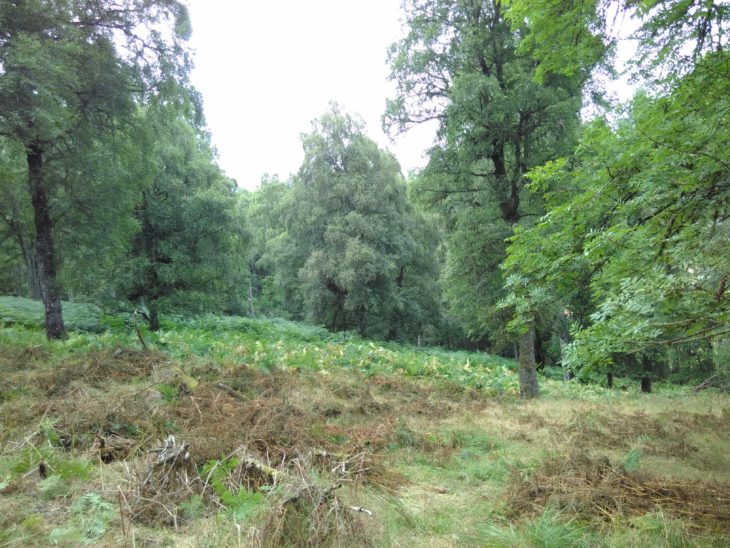
Bracken bashing in 3 stages
It has been rewarding to see our progress and to free up any choked juniper and other plants that have been struggling to grow under the dense bracken.
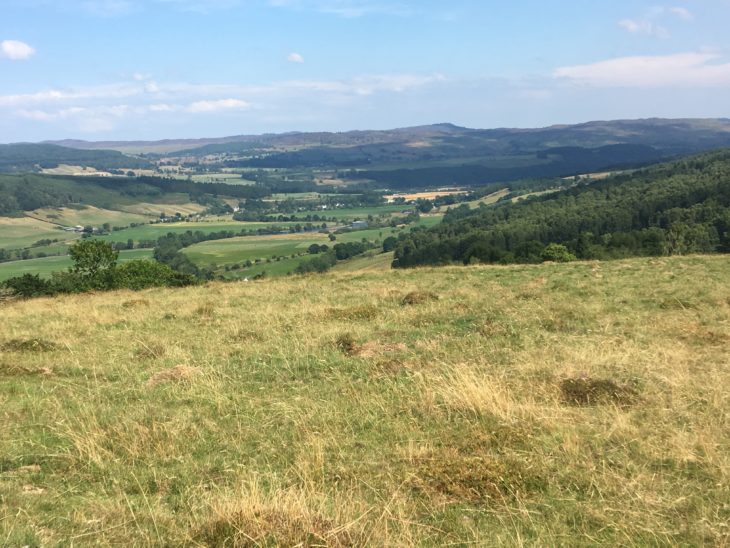
Bracken free expansive views from the top of Balnaguard
Tackling bracken in our Keltneyburn reserve is also a priority. This wildflower meadow has eight different species of native orchid and is often considered as one of the best places in the area for spotting a variety of butterfly species. So, to break up the bashing, we have been practising survey transects and have come across species such as peacocks and commas.
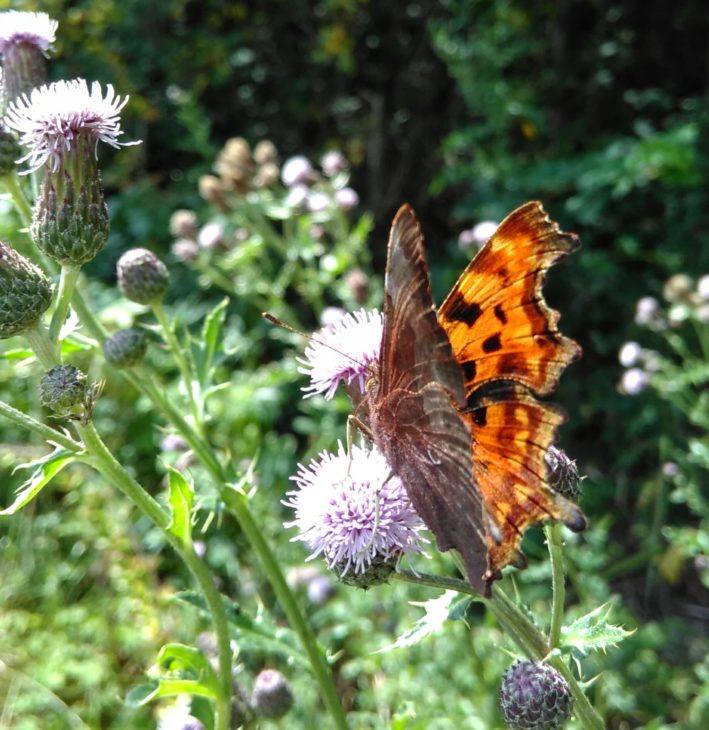
Comma butterfly on creeping thistle
Last week we visited the Ballinluig Tummel Shingle Islands reserve for the first time. It is a great walk through tall Douglas fir and silver fir trees before crossing over the backwater to reach the island. The dense wetland vegetation gives a feel of stepping back to the time of the dinosaurs.
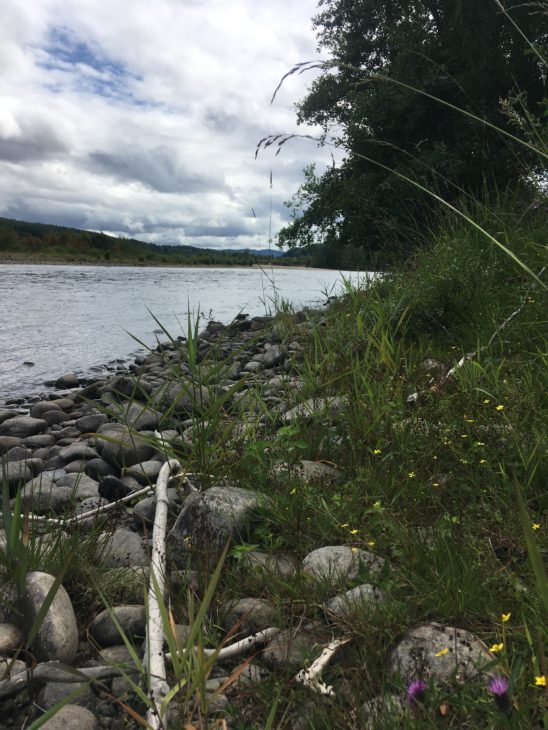
Views along the River Tummel from the shingle banks
There are lots of interesting plants to try and ID along the way such as bird cherry and sea campion. The ever-changing Ballinluig islands are a great example of a successional community, from flood tolerant plants on the shingle to mature woodland of Scots pine and birch being established on the far bank.
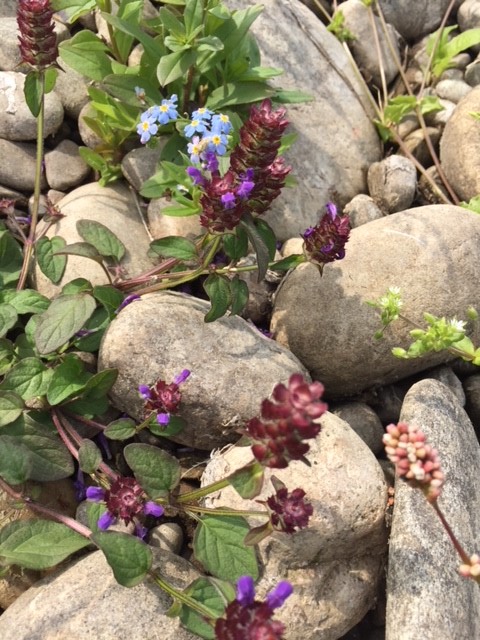
Selfheal and water forget-me-not
Controlling invasive plants such as lupins and non-native Himalayan balsam is important here, as on our other shingle island reserve at Tomdachoille. This is to prevent these species from spreading and taking over, which could block a greater range of plant species from growing.
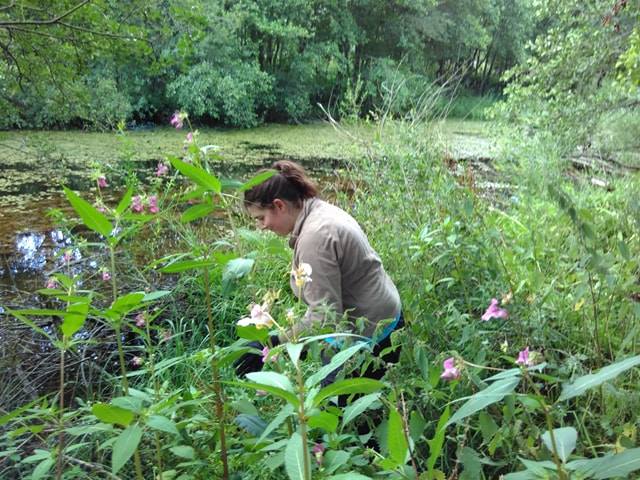
Katie pulling Himalayan Balsam
Our final reserve in the Perthshire region is Brerachan, a rare example of a Scottish upland hay meadow. The old saying of ‘small but beautiful’ definitely holds true here, as it boasts a great diversity of plants such as spignel and northern bedstraw. It is the perfect spot to practice our growing flower identification skills and also makes for an ideal lunch spot!
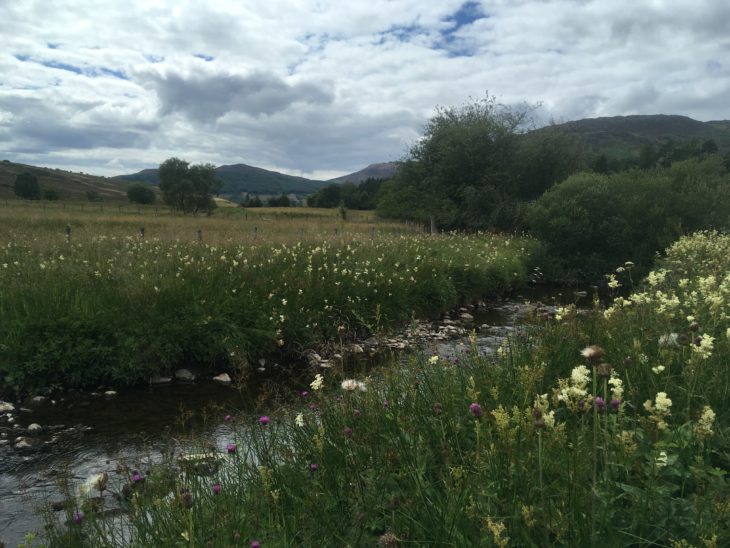
Meadowsweet and knapweed, both great for pollinators at Brerachan Meadow.
Thanks for reading. Keep following to see what else we get up to and discover in the next few weeks.
Help protect Scotland’s wildlife
Our work to save Scotland’s wildlife is made possible thanks to the generosity of our members and supporters.
Join today from just £3 a month to help protect the species you love.
Preface
Hi, I’m Katie, one of the Assistant Ranger volunteers at Loch of the Lowes and I’d like to tell you about what we have been getting up to in the …
